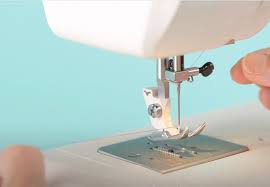Sewing machines are fabulous tools, in fact, that change the way we make different garments, home and outside ornamentals, and fabrics. Are you a beginner or an experienced tailor? It’s necessary to know the different aspects of the sewing machine because it’s the main tool for sewing projects. Here, in this beginner lesson, we’ll look at the inner workings of the sewing machine and how all its components function together, thus creating awesome stitches.
Content explore: best budget sewing machine
Needle: The needle, no doubt, is definitely the most crucial among the parts of the sewing machine. Born in the 1300s, this tool helped to piece fabrics together and to make the stitches. To have needles in different sizes and types, you need a different needle for different fabrics with different threads you are used to. Make sure you use the right needle for your project so that you will be able to have the desired outcome. At the same time, if the wrong needle is used, it negatively affects the outcome of the project.
Presser Foot: The presser foot holds the fabric below the sewing zone, preventing it from moving while stitching. The fabric about is meant to achieve uniformity and smooth attachment of stitches. There is a wide spectrum of certain presser feet; the orientation of the foot functions very differently – and they are used for different sewing techniques, e.g., zipper insertion, buttonholes, and quilting.
Bobbin: The bobbin is a small spool, which is the place where the thread goes down. It is in a spot that stretches through from under the needle plate and simultaneously works in two with the needle thread to form stitches. The bobbin should be especially carefully put in place to create straight stitches automatically.
BobbinCase: The bobbin case, where the bobbin sits placed beneath the needle plate, holds it in place. Its task is to make sure that the bobbin thread supply is uninterrupted. Some sewing machines carry bobbin cases that drop in, but others come with front- or side-loading cases.
Feed Dogs: The feed dogs are metal brushes under the needle bar. They pull the fabric forward and backward to keep the stitches accurate in the placements of your blows. The other option that helps you in selecting different fabrics and stitches is the adjustment of feed dog settings.
Stitch Selector: You can choose from different types of stitches such as straights, zigzag, apple pie, and variable length stitches based on your preference. Modern sewing devices mostly have different stitches, which are easy, fancy, and decorative. Try out different stitch settings to see the effect you want to have on the fabric.
Tension Dial: The tension device changes the density of the stitches. The right pull causes a seam so that stitches are flat and evenly spread over the fabric. Adjust the tension by rotating the dial, considering the thread type and fabric you are going to work with for positive feedback.
Thread Guides: Such guiding hooks are tiny hooks made of metal or plastic that guide the thread from the spool to the needle. They combat the development of knots and make the passage of the thread unhindered as it finally courses its route through the fabric. The thread following the thread hand and the thread path specified by the thread guide are the next garments to which the sewing machine needs to be threaded.
Hand Wheel: The hand wheel that features on one side of the sewing machine takes care of the lower and lifting of the needles. Adjust the position of the needle by moving the hand wheel and use it for accurate stitch advancement or when sewing.
Conclusion
Familiarizing yourself with these sewing machine parts will help you do a variety of sewing projects with greater confidence. Make sure also to consult your machine’s manual and, whenever necessary, follow the specific instructions and guidelines. Despite the difficulties you’ll face at the beginning, your skills will surely improve with time and consistency. This will enable you to create sophisticated and complex products without any challenges.
Meta Description:
“Get a comprehensive understanding of the different parts of a sewing machine. From the handwheel and bobbin winder to the needle and presser foot, learn about their functions and how they contribute to your sewing projects.”
Tags:
#SewingMachineParts, #SewingBasics, #DIY, #SewingTips, #Handmade, #FabricCrafts, #Quilting, #Embroidery, #Stitching, #SewingMachineMaintenance, #SewingTutorial, #SewingForBeginners, #SewingMachineGuide, #SewingLove

